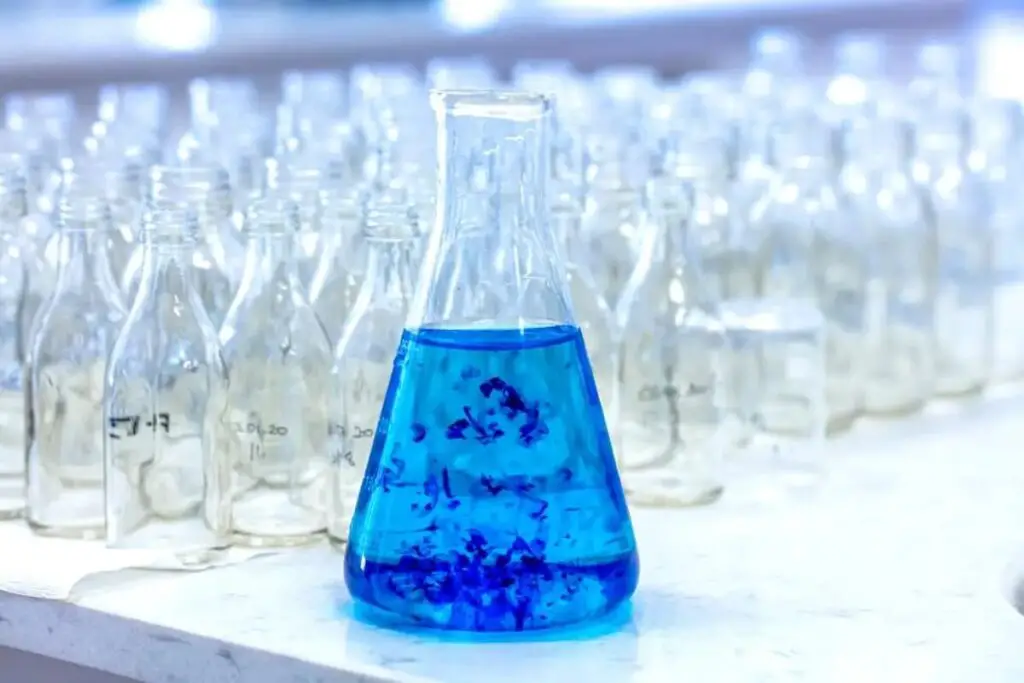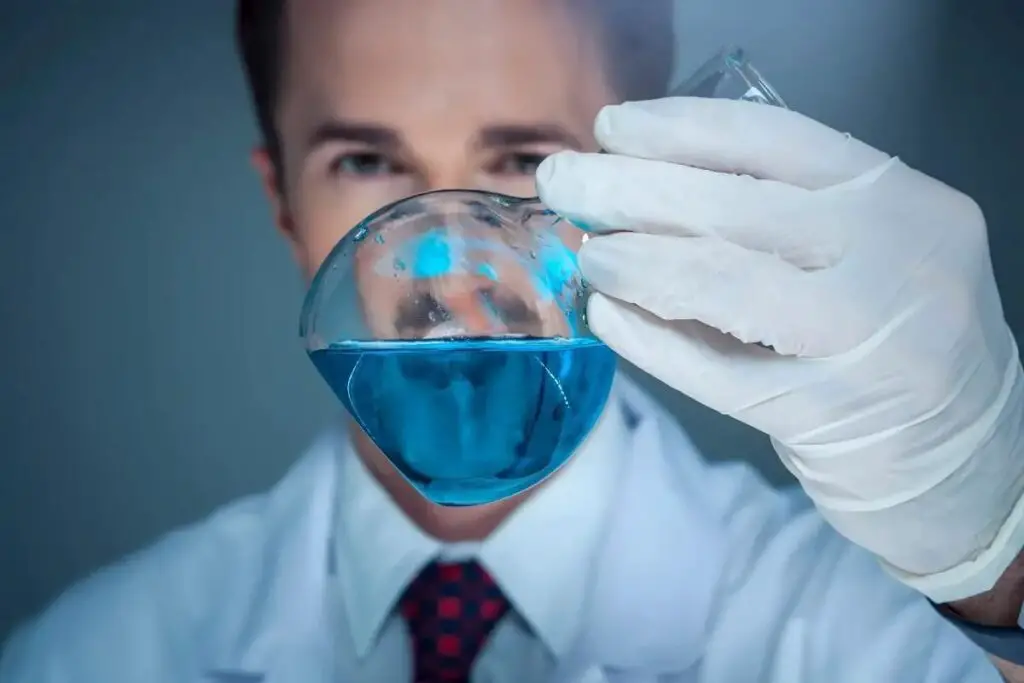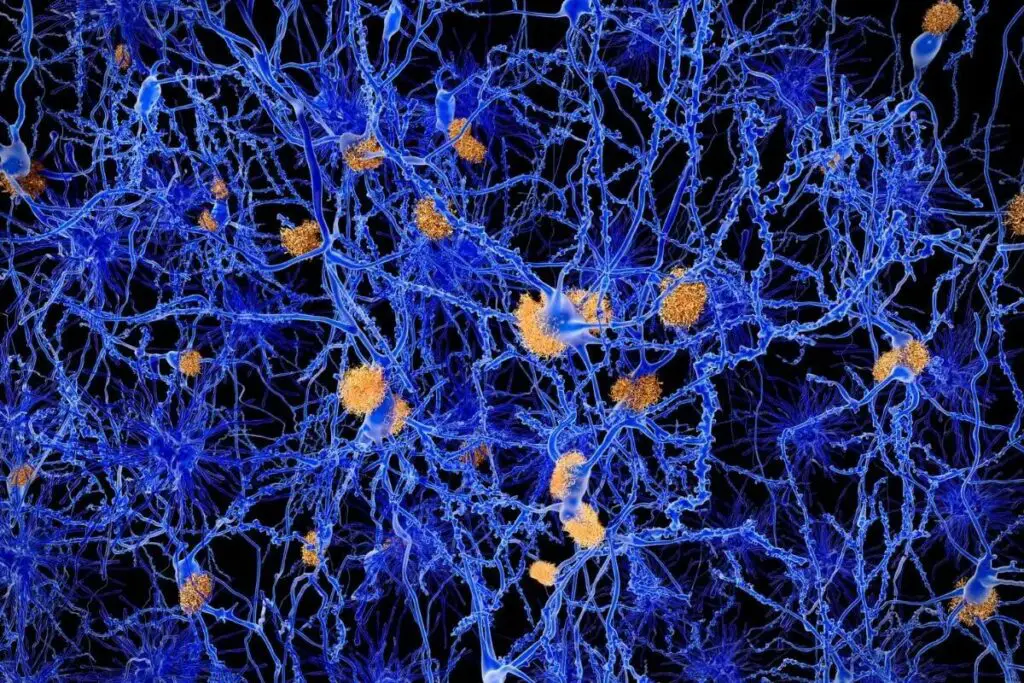What is it, and what are Methylene Blue uses? It is estimated that up to 30% of medicines on the market are used off-label. Sildenafil was originally studied for pulmonary hypertension. It has since been rebranded as Viagra and used for erectile dysfunction. Semaglutide is approved for Type 2 diabetes. It is now being sought after as a weight-loss medicine. Naltrexone, a medication used for opioid addiction, is being touted for its use in many autoimmune issues.
In rare instances, we come across very old molecules that become Swiss army knives for a multitude of medical disorders. One of these molecules can aid as an anti-inflammatory, antioxidant, and antidepressant, as well as provide mitochondrial support (more energy in our cells). Most intriguing of all, this specific molecule acts as a neuroprotective agent and can offer potentially positive cognitive effects for patients with Alzheimer’s Disease and related dementias.
The name of the molecule: Methylene Blue.
History
Methylene Blue has a long history. It was originally developed to be used as a textile dye in 1876 by German chemist Heinrich Caro (talk about off-label!). Soon after, it became the first synthetic chemical to be tested in human patients. Paul Ehrlich, a Nobel laureate, was credited with utilizing its antimicrobial properties to treat malaria. This led to a myriad of scientists rushing to research what else Methylene Blue could be used for.
A lot of discoveries have been made since 1876. Our understanding of the human body and how to utilize available molecules is constantly evolving. The most popular website for researching medical studies is PubMed. It is a public database of research journals and articles that is used across the entire medical community.
PubMed can also be used as a tool to see how much research is currently being done on a specific medication. And the amount of recent research being conducted on Methylene Blue is exponential. In 2000, there were 333 new results published on Methylene Blue. That number grew to 650 new results in 2010. In 2022, nearly 2000 new results were published. This is mind-blowing for a medicine that has been around for more than a century.
So what calls for the exponential growth in research? That’s likely due to a few of the most beneficial potential uses of Methylene Blue: cognition, neuroprotection, and Alzheimer’s disease. It is well known that the brain is considered the last frontier in medicine. For as easy as it may be to diagnose many neurological disorders, our understanding of why and how they happen remains largely a mystery. Due to that, it’s difficult to develop a new medication to attack these disorders. But as our understanding of the brain develops, so too does our ability to use what we currently have to help the brain.
If you are looking for more information on Alzheimer’s disease, including discussing developing Alzheimer’s, cognitive decline, memory problems, and environmental factors, there are comprehensive articles already written. This article from the Mayo Clinic has more information on Alzheimer’s disease, related dementias, and brain cells. In this post, I’m going to focus more on methylene blue, its history, and how it relates to Alzheimer’s disease.
How is Alzheimer’s Disease Treated?
Alzheimer’s Disease, one of the most common and debilitating neurological (brain) disorders has been a mystery for decades. This brain disorder results in progressive loss of memory and cognition, which are disabling not only for the patient, but also the caregivers. Not only do we lack highly efficacious treatments, but the cause of the disease is highly debated. Some argue that it’s due to shrinking of the brain, others blame improperly shaped proteins that predominantly make up the brain. Some new research suggests it can be considered a new type of Diabetes, or “Diabetes Type 3.”
An Alzheimer’s disease patient’s brain contains abnormalities compared to a normal brain. One of these is amyloid plaques. In early research, amyloid plaques were thought to be the cause of Alzheimer’s disease. Because of this, there have been millions of dollars and years of research to target these deposits. While it may sometimes make sense to attack an abnormality, we are now realizing that these plaques in the brain may be a consequence of Alzheimer’s disease, not a cause.
Think of it this way: A stubbed toe hurts a lot. It may even leave a bruise. A day later if you are still in pain and look down to the bruise. You know it’s not the bruise itself that is causing the pain. The cause of the pain was stubbing your toe, and one of the consequences was a bruise. This bruise is similar to the amyloid plaque in the brain.
Another more recent discovery of a brain with Alzheimer’s disease is neurofibrillary tangles. These are like little tangles of neurons (your brain’s cells) caused by a protein called tau. A healthy brain regulates the production and breakdown of tau, but an Alzheimer’s disease brain has trouble with this process.
Methylene Blue & Alzheimer’s Disease
This is where Methylene Blue comes in. There have been studies suggesting that, through a number of mechanisms, Methylene Blue may inhibit that tau protein aggregation. It may also help with other neuroprotective functions such as reducing mitochondrial superoxidase, upregulating Nrf2/ARE genes, and enhancing the clearance of the enzyme responsible for tau aggregation.
Methylene Blue may also help with cognition and help slow down the aging of the brain. In the world of social media, it’s known as a powerful “nootropic.” You can frequently see users show their blue tongue (again, it’s a STRONG dye) and comment on their green urine. Yes, taking methylene blue will likely result in your urine turning green. No need to worry!
One of the beneficial effects of Methylene Blue is its mitochondrial support. Mitochondria are considered the powerhouse of the cell. They give the body energy for daily function. You eat food for energy. Mitochondria takes that food and converts it to the energy we use. As we age, our mitochondria lose efficiency. This means less energy for our muscles and brain. Less energy for your brain can lead to less memory, cognition, and concentration; not to mention depression.
Think of your brain like a car with low oil. Eventually, the engine produces friction, which causes wear and tear on the rest of the vehicle. The car may not be as fast or as responsive as it was before. Eventually, the brakes may fade and now it is dangerous to drive. The oil can be comparable to the mitochondria in our brain. Without properly fueled and functioning mitochondria our memory, focus, attention, and cognition may all deteriorate. These issues may rapidly worsen depending on the health of our mitochondria
Word of caution: There are no large, well-designed clinical trials to determine if Methylene Blue is definitely efficacious and safe in patients with Alzheimer’s disease. That being said, we know its mechanisms and how it may help. And we know that it’s safe at certain doses. With our recent understanding of what may cause Alzheimer’s disease, it seems like a potential addition to current therapies for the right patients.
TauRx is a late stage pharmaceutical company that looks to have developed a derivative of methylene blue. Interestingly, they did not show improvement over placebo (a pill with no medicine) in one trial. It’s a little difficult to discern if it is helping or not. But, the consensus so far seems to be that their drug; so by analogy methylene blue; may help in early or pre dementia. In other words, methylene blue like molecules may help the most before dementia or Alzheimer’s disease develops. Later stages aren’t helped – and you should know that so that you don’t get false hope.
Where to get good quality Methylene Blue?
Right now, you cannot get Methylene Blue from a traditional retail pharmacy like CVS.
Methylene Blue is considered an “active ingredient.” This means it performs some kind of action within the body. As we’ve discussed before, the promising benefits of Methylene Blue are not going unnoticed. The problem this typically leads to is bad actors exploiting the hype. Methylene blue is widely available due to its wide-ranging uses (like being used as a dye), and its age on the market. This availability leads to unqualified companies creating their own product and selling online.
While having affordable access to emerging therapies is important, poor-quality and cheap manufacturing can wreak havoc on a person’s body. This is especially true with Methylene Blue. Given its chemical structure, it’s a magnet for heavy metals like arsenic. High exposure to arsenic over time can lead to cancer and skin lesions, among other ailments.
What comes as a surprise to many is that the supplement industry is not regulated by the FDA. Individual companies do not have to pass the same rigorous manufacturing and quality control as pharmaceutical manufacturers. There is no initial check to make sure what a company is producing is safe for human consumption. Furthermore, there have been several stories over the years of supplements from popular companies being tested, just to find little to none of the claimed ingredients in their product.
This means that right now, anyone could Google “Methylene Blue Lab Dye,” and buy a 1-ounce bottle of Methylene Blue dye for $4.25 at the time of this writing. They could add a new label on it called “Magic Methylene Blue,” and sell it on Amazon for $9. Remember, this bottle is strictly meant to be used as a dying stain in a lab. It could be loaded with things like arsenic, mercury, lead, E. Coli, Salmonella, yeast, and mold. NASTY!
So who can you trust for a good, high-quality product? Right now, compounding pharmacies are able to source USP-Grade Methylene Blue from FDA-approved manufacturers. Compounding pharmacies are pharmacies that customize medication according to specific needs, wants, allergies, and specificities. USP stands for United States Pharmacopeia. They are the premier organization that sets standards for the quality of pharmaceutical treatments used in the United States.
In order for a compounding pharmacy to use an active ingredient, it has to come from an approved manufacturer. That means that the manufacturing quality of the chemical meets extremely strict standards. This means that compounding pharmacies source Methylene Blue that meets standards for safe human consumption, from a highly reliable source, that can be customized to the specific dose you need. Now there are varying degrees of quality when it comes to compounding pharmacies themselves. To find a good one, look for a PCAB (Pharmacy Compounding Accreditation Board) accredited pharmacy.
Risk Factors, Drug Interactions & Allergic Reactions: Who shouldn’t take Methylene Blue?
As with most medications, everyone must consider adverse reactions, risk factors, and interactions. One of the most pressing risk factors and interaction may be with antidepressants. Methylene Blue exhibits slight monoamine oxidase (MAO) inhibition. For most, this means it can act as an antidepressant. But if taken with other antidepressants, there is a risk of serotonin syndrome. Always discuss this with your doctor.
Other populations that should be cautious about Methylene Blue are patients taking dapsone, renal (kidney) issues, G6PD deficiencies, neonates, and anyone that is pregnant or breastfeeding.
Conclusion
No medicine, product, or therapy out there is a fix-all for everything. Every day we are learning more about the body and what old and new substances may do to it. But with intensifying and rampant research of this ancient product, we may have a new (but old) option for many debilitating disease states such as Alzheimer’s disease. I’m not advocating for you to use methylene blue, rather, I hope that this information and article help you make an informed decision. Remember to always discuss with your doctor, and get any medication from a reputable source.
FAQs
What is Methylene Blue?
Methylene Blue is a 120-year-old medication that can affect the body in many positive ways. It was originally developed as a dye, but quickly found use in various modalities in health care. While it may be beneficial for you, always speak to a healthcare provider before determining if treatment is right for you.
What are the benefits of Methylene Blue for Alzheimer’s disease?
While more studies are needed, it may assist with mild cognitive impairment, memory loss, cognition, and other brain changes associated with aging. It is believed to work by modifying how tau proteins are aggregated in the brain.
What are the benefits of Methylene Blue for Humans?
Acutely, it can treat methemoglobinemia. Chronically, it may help with mitochondrial function, dementia, Alzheimer’s disease, depression, and memory loss, and may assist with healthy aging.
Is Methylene Blue safe for daily use?
It is safe for most, but the following should be cautious about using it.
– Those on antidepressants (may cause serotonin toxicity).
– G6PD (glucose 6 phosphate dehydrogenase) deficiency.
– Patients on Dapsone.
– Pregnant or breastfeeding.
Is Methylene Blue toxic to humans?
A major risk factor of Methylene Blue is overdosing. It primarily helps at low doses, but can be dangerous at high doses. Always discuss your treatment plan with a healthcare provider. A poorly manufactured methylene blue, usually found over the counter as a dietary supplement, can cause several medical problems due to a build up of heavy metals.
References:
Gureev AP, Sadovnikova IS, Popov VN. Molecular Mechanisms of the Neuroprotective Effect of Methylene Blue. Biochemistry (Mosc). 2022 Sep;87(9):940‐956. doi: 10.1134/S0006297922090073. PMID: 36180986
Xue H, Thaivalappil A, Cao K. The Potentials of Methylene Blue as an Anti‐Aging Drug. Cells. 2021 Dec 1;10(12):3379. doi: 10.3390/cells10123379. PMID: 34943887; PMCID: PMC8699482.
Sun W, Lee S, Huang X, Liu S, Inayathullah M, Kim KM, Tang H, Ashford JW, Rajadas J. Attenuation of synaptic toxicity and MARK4/PAR1‐ mediated Tau phosphorylation by methylene blue for Alzheimer’s disease treatment. Sci Rep. 2016 Oct 6;6:34784. doi: 10.1038/srep34784. PMID: 27708431; PMCID: PMC5052533
Oz, M., Lorke, D. E., & Petroianu, G. A. (2009). Methylene blue and Alzheimer’s disease. Biochemical Pharmacology, 78(8), 927– 932. doi:10.1016/j.bcp.2009.04.034
Bruchey AK, Gonzalez‐Lima F. Behavioral, Physiological and Biochemical Hormetic Responses to the Autoxidizable Dye Methylene Blue. Am J Pharmacol Toxicol. 2008 Jan 1;3(1):72‐79. doi: 10.3844/ajptsp.2008.72.79. PMID: 20463863; PMCID: PMC2867617.

Jack Korbutov, RPh, PharmD, FACA, FACVP
Jack is a Pharmacist and the President of The Art of Medicine, a compounding pharmacy serving 16 states based out of Philadelphia, Pa. He is an expert in developing customized medication for each individual patient, specifically in dermatology, neurology, and hormone replacement.

Jon Fernandez, Editor
Jon is a prolific writer, clinical author, and expert on topics related to health technology, aging, medical devices, pharmaceuticals, and skincare. He earned a Graduate Certificate in Pharmaceutical Chemistry from the University of Florida College of Pharmacy along with post graduate studies at the University of Colorado Healthcare Administration program.






